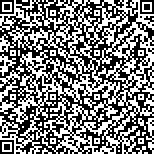蔡昂,杨俊锋,刘如垚,等.气管切开患者营养不良预测模型的构建及评估[J].中华物理医学与康复杂志,2024,46(3):199-204
扫码阅读全文

|
| 气管切开患者营养不良预测模型的构建及评估 |
|
| |
| DOI:10.3760/cma.j.issn.0254-1424.2024.03.002 |
| 中文关键词: 气管切开 营养不良 危险因素 预测模型 列线图 |
| 英文关键词: Tracheotomy Malnutrition Risk factors Prediction models Nomograms |
| 基金项目: |
|
| 摘要点击次数: 3949 |
| 全文下载次数: 3848 |
| 中文摘要: |
| 目的 探讨气管切开患者营养不良的危险因素,构建预测模型,为患者营养不良的预防和早期干预提供参考。 方法 回顾性分析符合纳入条件的440例气管切开患者的临床资料,包括年龄、性别、病因、格拉斯哥昏迷评分(GCS)、日常生活活动(ADL)能力评分、年龄校正的查尔森合并症指数(aCCI)评分、进食途径、吞咽情况、感染情况、糖尿病史、高血压史、吸烟史、饮酒史。采用营养风险筛查工具(NRS-2002)筛查出具有营养不良风险患者(NRS-2002≥3),根据欧洲临床营养与代谢协会(ESPEN)2015年营养不良专家共识(简称ESPEN2015标准)进行营养不良诊断。通过NRS-2002和ESPEN2015标准,将患者分为营养不良组(343例)和对照组(97例),然后进行单因素和多因素Logistic回归分析。应用逐步回归(Stepwise)方法,将单因素分析中P<0.05的因素纳入多因素Logistic回归分析中,分析影响营养不良的独立危险因素,并构建列线图预测模型。应用受试者工作特征(ROC)曲线、校准图和决策曲线分析(DCA)评估该模型的临床实用性。 结果 本组440例患者中,有343例患者(78.0%)发生营养不良。多因素Logistic回归分析显示,肺部感染、吞咽困难、低GCS评分、高aCCI评分是气管切开患者营养不良的危险因素(P<0.05),以此建立列线图预测模型;拟合矫正后绘制预测模型ROC的曲线下面积(AUC)为0.911,特异度为80.4%,敏感度为91.3%,显著高于肺部感染(0.809)、吞咽困难(0.697)、aCCI(0.721)和GCS(0.802),且差异均有统计学意义(P<0.001);采用Bootstrap自抽样方法对模型进行内部验证,重复抽样1000次后预测风险与实际风险的平均绝对误差为0.013,表明模型预测值与实际值基本一致。DCA结果显示,较大阈值概率(0~0.96)行营养干预时,模型均具有较高的临床应用价值。 结论 肺部感染、吞咽困难、低GCS评分、高aCCI评分是气管切开患者营养不良的危险因素;本研究构建的列线图模型对气管切开患者营养不良的发生具有较好的预测能力。 |
| 英文摘要: |
| Objective To explore the risk factors for malnutrition after a tracheotomy and to construct a predictive model useful for its prevention through early intervention. Methods Clinical data describing 440 tracheotomy patients were subjected to a retrospective analysis. The variables examined were age, sex, etiology, Glasgow Coma Score (GCS), activities of daily living (ADL) score, age-corrected Charlson comorbidity index (aCCI), food intake, swallowing function, incidence of infections, as well as any history of diabetes mellitus, hypertension, smoking or alcohol consumption. Patients identified as being at risk of malnutrition (NRS-2002≥3) were screened using the Nutritional Risk Screening tool (NRS-2002) and the European Society of Clinical Nutrition and Metabolism′s ESPEN2015 criteria. The subjects were thus categorized into a malnutrition group of 343 and a control group of 97. Unifactorial and multifactorial logistic regression analyses were performed, and stepwise regression was applied to include the factors found significant in the unifactorial analysis into the multifactorial logistic regression analysis, and to construct a column-line graph prediction model. The clinical utility of the model was assessed by applying the receiver operator characteristics (ROC) curves, calibration plots and decision curve analysis (DCA). Results Of the 440 persons studied, 343 (78%) were malnourished. The multivariate logistic regression analysis showed that pulmonary infection, dysphagia, low GCS score and high aCCI score were significant risk factors for malnutrition after a tracheotomy. A prediction nomograph was constructed. After fitting and correcting, the area under the curve (AUC) of the prediction model′s ROC curve was 0.911, the specificity was 80.4%, and the sensitivity was 91.3%. That was significantly higher than the AUCs for pulmonary infection (0.809), dysphagia (0.697), aCCI (0.721) and GCS (0.802). Bootstrap self-sampling was used to verify the model internally. After 1000 samples the average absolute error between the predicted risk and the actual risk was 0.013, indicating good prediction ability. The DCA results demonstrated that the model has substantial clinical applicability across a range of nutritional interventions, particularly for threshold probability values ranging from 0 to 0.96. Conclusion Pulmonary infection, dysphagia, low GCS score, and high aCCI score are risk factors for malnutrition among tracheotomy patients. The nomogram model constructed in this study has good predictive value for the occurrence of malnutrition among such patients. |
|
查看全文
查看/发表评论 下载PDF阅读器 |
| 关闭 |
|
|
|